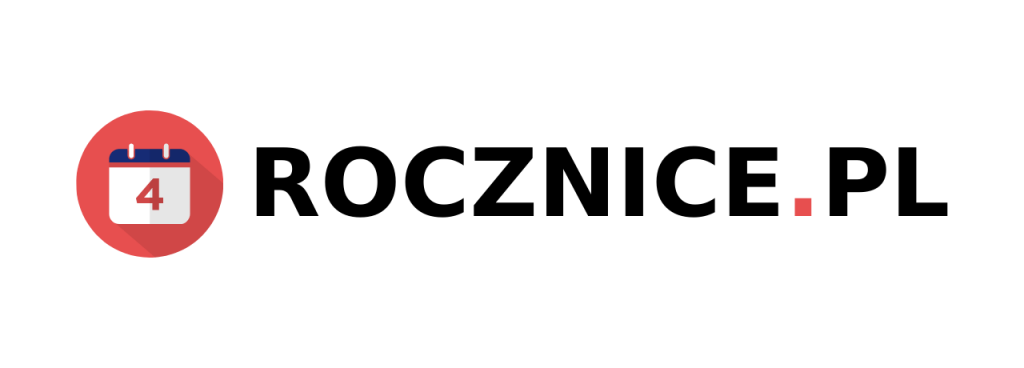
AI for DiSC® Styles: How Each Personality Type Can Use AI Effectively?
Artificial Intelligence (AI) is no longer a futuristic concept — it’s a practical reality that is reshaping the way we work, learn, and communicate. From generative AI platforms like ChatGPT and MidJourney to business tools that automate processes, AI offers opportunities for greater productivity, creativity, and decision-making.
Yet, like any tool, the effectiveness of AI depends on how people use it. And how people use it is heavily influenced by their behavioral preferences.
That’s where Everything DiSC becomes valuable. The four DiSC styles — Dominance (D), Influence (i), Steadiness (S), and Conscientiousness (C) — each bring unique strengths and challenges to the way they approach AI. By understanding these tendencies, individuals and teams can select AI tools that complement their natural working styles and mitigate potential blind spots.
This article explores which AI tools best suit each DiSC style and what each style should keep in mind to get the most out of them.
Why Connect DiSC® and AI?
The DiSC framework is not about labeling people; it’s about understanding behavioral preferences. Some of us are more direct and results-driven (D), while others thrive on relationships and enthusiasm (i). Some prefer stability and cooperation (S), while others value accuracy and structure (C).
AI tools, meanwhile, come in many forms:
-
Content creation (e.g., ChatGPT, Jasper, Copy.ai)
-
Data analysis (e.g., Tableau with AI, Power BI Copilot)
-
Automation (e.g., Zapier, UiPath)
-
Project and team collaboration (e.g., Notion AI, Microsoft Copilot, Trello with AI add-ons)
-
Creative design and ideation (e.g., MidJourney, DALL·E, Runway)
By aligning behavioral preferences with the right type of AI support, people can work smarter, not harder. At the same time, each style must watch out for pitfalls — overreliance, blind spots, or misusing AI in ways that conflict with their natural approach.
The D Style: Fast, Results-Oriented, Decisive
What Drives D-Style People
People with a Dominance orientation value speed, efficiency, and tangible results. They’re motivated by challenges and enjoy taking charge. Their motto could be: “Let’s get it done.”
AI Tools That Suit the D Style
-
Decision-Support AI Tools
-
Examples: ChatGPT for business strategy, IBM Watson for analytics
-
Why: D-style individuals like cutting to the chase. They can use AI to quickly synthesize complex information, generate scenarios, or provide concise summaries to accelerate decision-making.
-
-
Productivity and Automation Platforms
-
Examples: Zapier, Notion AI, Microsoft Copilot
-
Why: These tools free D-style leaders from repetitive tasks so they can focus on strategic priorities.
-
-
Data-Driven Sales AI
-
Examples: Gong.io, HubSpot AI, Salesforce Einstein
-
Why: D-style professionals in sales or leadership love numbers that prove results. AI-powered CRM insights can help them forecast outcomes and track performance.
-
What D Styles Should Keep in Mind
-
Don’t skip the details. AI summaries and shortcuts may overlook important nuances. D styles must resist the temptation to accept the “first answer” from AI without verifying accuracy.
-
Balance speed with empathy. Using AI to push processes forward quickly is efficient, but colleagues may need more context and dialogue.
-
Watch overreliance. It’s easy for D styles to use AI as a “decision shortcut” instead of engaging people in collaborative problem-solving.
The i Style: Enthusiastic, People-Oriented, Creative
What Drives i-Style People
People with an Influence orientation thrive on connection, storytelling, and collaboration. They are energized by brainstorming, sharing ideas, and inspiring others. Their motto could be: “Let’s make this exciting.”
AI Tools That Suit the i Style
-
Generative Content and Creativity Tools
-
Examples: ChatGPT, Jasper, Canva AI, MidJourney
-
Why: i styles love to express ideas but may struggle with structure. AI helps them turn enthusiasm into polished content — from social posts to presentation visuals.
-
-
Collaboration and Communication Platforms
-
Examples: Slack with AI assistants, Miro AI, Notion AI
-
Why: i styles thrive in group settings. AI-enhanced collaboration tools help them capture brainstorming ideas, reframe them into action steps, and keep momentum.
-
-
Video and Storytelling AI
-
Examples: Runway, Synthesia, Descript
-
Why: These tools help i styles bring stories to life visually and emotionally, amplifying their natural ability to inspire others.
-
What i Styles Should Keep in Mind
-
Don’t get distracted. AI can generate endless creative possibilities. i styles need to set boundaries to avoid chasing novelty over results.
-
Check for credibility. i styles may accept AI’s “inspired answers” without validating facts. They should slow down to fact-check.
-
Use AI to listen, not just talk. While AI can amplify their voice, i styles should also use tools for active listening — like sentiment analysis — to stay connected to others’ perspectives.
The S Style: Supportive, Steady, Team-Oriented
What Drives S-Style People
People with a Steadiness orientation value harmony, dependability, and relationships. They’re excellent team players who like predictable environments and practical solutions. Their motto could be: “Let’s keep it steady and supportive.”
AI Tools That Suit the S Style
-
Team Collaboration and Workflow AI
-
Examples: Trello with AI, Asana AI, Microsoft Teams Copilot
-
Why: S styles thrive in supportive roles. AI-powered project management tools keep everyone aligned without overwhelming them.
-
-
Employee Experience and HR AI Tools
-
Examples: CultureAmp with AI insights, Qualtrics XM AI, Lattice
-
Why: S styles in HR or team leadership can use AI to monitor engagement, predict burnout, and ensure colleagues feel supported.
-
-
Knowledge Management Tools
-
Examples: Notion AI, Guru AI, Confluence with AI
-
Why: S styles like sharing resources and being reliable. AI-powered knowledge bases help them document and share information easily.
-
What S Styles Should Keep in Mind
-
Avoid overaccommodation. AI may help them take on too much for others. S styles must set boundaries and not use AI just to say “yes” more often.
-
Don’t resist new tools too long. Their preference for stability can make them hesitant to try AI. They should adopt gradually but not avoid.
-
Balance relationships with results. AI can provide data-driven insights that sometimes challenge personal assumptions. S styles should use these to balance empathy with facts.
The C Style: Analytical, Detail-Oriented, Structured
What Drives C-Style People
People with a Conscientiousness orientation value accuracy, logic, and quality. They like working with data, rules, and clear processes. Their motto could be: “Let’s make sure it’s right.”
AI Tools That Suit the C Style
-
Data Analysis and Visualization AI
-
Examples: Tableau with AI, Power BI Copilot, Google Cloud AutoML
-
Why: C styles thrive on accuracy. AI helps them analyze large datasets, spot patterns, and create visual dashboards with precision.
-
-
Research and Writing Assistants
-
Examples: Perplexity AI, ChatGPT (for structured prompts), Scite
-
Why: These tools help C styles gather, verify, and structure complex information — perfect for reports and detailed documentation.
-
-
Compliance and Risk Management AI
-
Examples: LogicGate AI, Riskified, IBM OpenPages
-
Why: C styles like ensuring rules are followed. AI-driven compliance tools help identify risks, track regulations, and enforce standards.
-
What C Styles Should Keep in Mind
-
Don’t get stuck in analysis paralysis. AI offers endless data and refinements. C styles should balance thoroughness with timely action.
-
Trust collaboration, not just rules. AI can support accuracy, but decisions also require human judgment and flexibility.
-
Use AI for big-picture, not just details. They can lean too heavily on micro-accuracy. C styles should also explore how AI supports innovation and vision.
Practical Tips for Leaders Introducing AI with DiSC
-
Match training to styles. Provide quick wins and case studies for D styles, creative demos for i styles, supportive guides for S styles, and detailed manuals for C styles.
-
Encourage style complementarity. Pair D with C to balance speed and accuracy, or i with S to balance creativity with empathy.
-
Build psychological safety. Some may fear AI will replace their role. Leaders should emphasize AI as a partner, not a threat.
-
Review ethics and transparency. C styles will demand accuracy, while S styles will want fairness. Address both concerns proactively.
Conclusion
AI tools are powerful, but they’re not one-size-fits-all. How individuals engage with them depends on their behavioral preferences, motivations, and blind spots. By applying Everything DiSC insights, organizations can tailor AI adoption to fit each style:
-
D styles use AI for speed and results but must slow down for detail.
-
i styles use AI for creativity and inspiration but must fact-check and focus.
-
S styles use AI to support people and processes but must embrace change confidently.
-
C styles use AI for precision and analysis but must avoid perfectionism.
When organizations align AI tools with DiSC styles, they don’t just adopt new technology — they empower people to use it in ways that feel natural, responsible, and effective. The result is smarter adoption, stronger teams, and a future where human strengths and artificial intelligence truly complement each other.
Może Ci się spodobać

Czy rubin syntetyczny to to samo co cyrkonia w kolorze rubinowym? Podpowiadmy co wybrać.
21 lutego, 2025
45 rocznica ślubu – rocznica szafirowa
11 sierpnia, 2020


